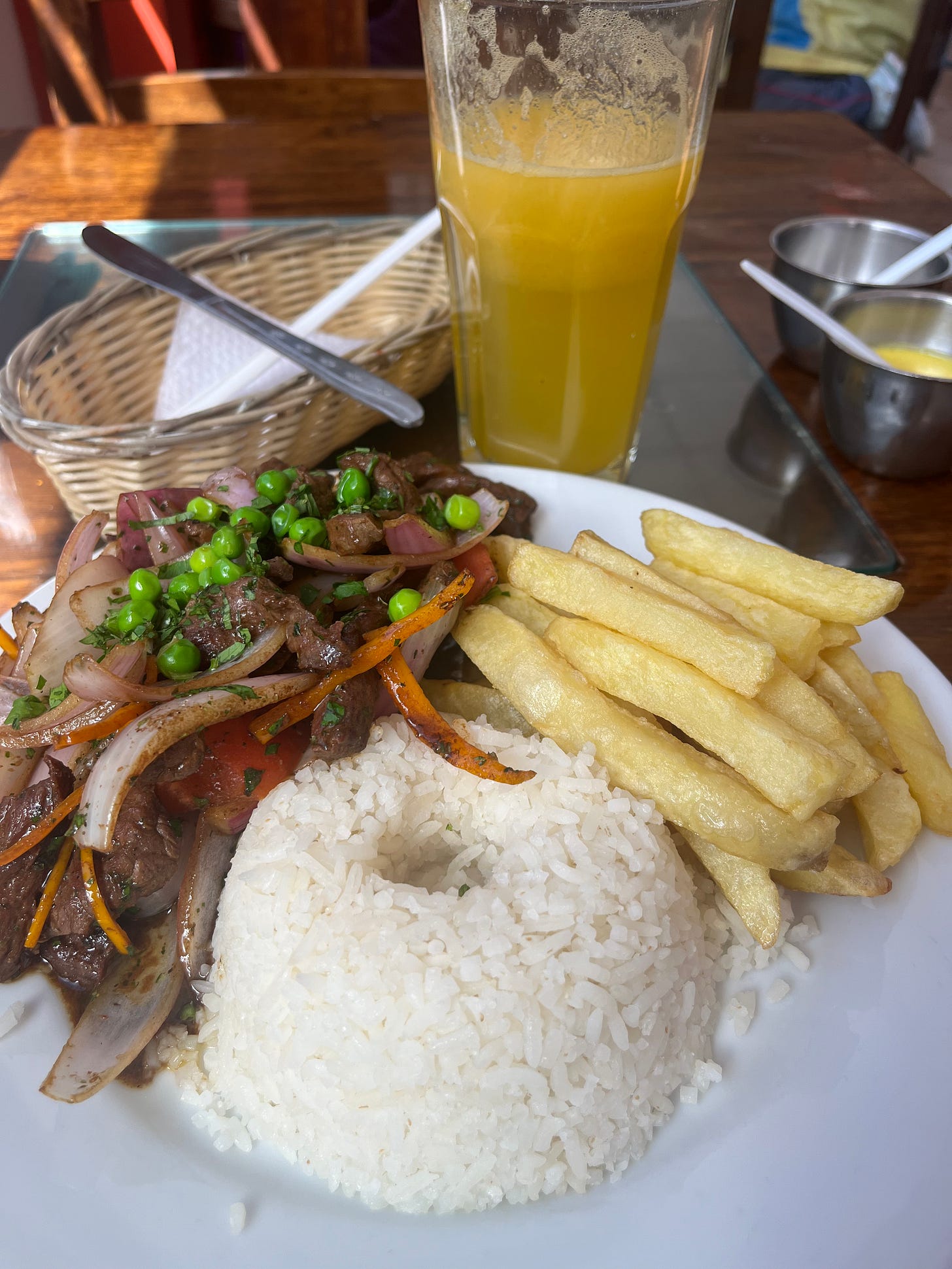City guide: Lima- Cusco🇵🇪
today I'm going to tell you everything I liked and didn't like about that country.
I was traveling through Peru, specifically in Lima and Cusco, and today I'm going to tell you everything I liked and didn't like about that country. I was mainly there for work reasons; I have a business consulting company that also hosts events related to the port, airport, hotel, and hospital sectors in Latin America. Basically, what we do is talk to various port directors and offer them technology solutions from companies that pay us for this. We represent them at these events.
My opinion of Lima: Everything is cheaper than in Colombia.
Doing the math, we can say that 1 Peruvian sol is equal to 1 Colombian peso. However, everything is cheaper in Lima, from Airbnb to restaurant food, and the market. Everything is cheaper. Even tourism is more affordable. The cost of living in Colombia is exaggerated. And I'm not talking about people earning in dollars; I'm saying that even for Colombians, it's better to live in Peru than in Colombia.
The food in Peru is delicious; I tried lomo saltado and limeño ceviche, and I'll leave some photos of the dishes. I must say that I also tried the empanadas, and they are delicious. They add lemon, but it tastes different from the one in Colombia; it is sweeter. The prices are all cheap, ranging between 20-50 soles, which would be between 5-15 dollars at most, and they come very complete. They serve a lot of food. All the restaurants are good, including the cheaper ones.
Something I noticed is the hatred toward Venezuelans. They are deeply hated and practically blamed for the country's misfortunes. Everything bad that happens in Peru is because of the Venezuelans, from prostitution to bad drivers. In fact, I realized that everyone in Peru drives horribly. They drive as if they are seeking death. As soon as you arrive at the airport, you see many accidents. There are accidents right away; it's the first thing you can see. Everyone drives fast and very close to each other. There was an accident, and it seemed like they agreed to let everything return to normal because accidents like that are normal.
I liked Lima for its affordability, delicious food, and Airbnb. I didn't like the nightlife much because people don't interact as much in bars; they don't dance much, and the women are not attractive, at least in my opinion. I much prefer the nightlife in Colombia. There's no comparison.
I had the opportunity to go to Cusco, where I visited the Humantay Lagoon and climbed it on horseback, an unforgettable experience. Unfortunately, I couldn't go to Machu Picchu because I needed to reserve tickets in advance, and since I was there for work, I couldn't visit it. The only thing I would change is the time of year I went. In July, it's winter in Peru; both Lima and Cusco are much colder than Bogotá (I've been told that the best time to visit is in September or even December).
The trip to the lagoon takes a full day; it's not in Cusco, but about 3 hours away by car, and then you have to climb a mountain where you can see the snow. You could hike up the mountain on foot, but you need trekking shoes and trekking poles, though I don't know what they're called, haha. I didn't do that; I rode a horse because the altitude is too much.
You run out of oxygen, and I'm from the Caribbean, so I'm not used to that altitude. The horse ride cost about 100 soles (20 dollars). It takes a long time to go up and down the mountain to get to the Humantay Lagoon. I rode up on horseback in about half an hour or a bit more and came down the mountain in about an hour because I was with my sister, so I took a little longer to make sure she didn't fall. I didn't have the right shoes, so that slowed me down. But I recommend this plan; you get amazing photos, and the landscape leaves you speechless. The images don't capture how beautiful that place really is.
Of course, I went at this time because it was a work trip, during which I had the opportunity to visit the port of Chancay and saw firsthand how China is going to take over Peru. There are many Chinese workers, and everything is automated, from cranes to the trucks that carry the containers. The United States has lost influence in Latin America because it is focused on the woke world, Ukraine, and other things and has lost direct influence in Latin America. The USA has military bases all over the world, but China is taking over commercial ports in Latin America and consolidating its presence. In less than ten years, Brazil's main partner is now China, and the same is happening with Peru and this port of Chancay, which will have at least 7,000 direct workers.
Something I noticed about the port is that it is easy to smuggle drugs through there. There is no security; you arrive in the town of Chancay, and it's a poor town with almost no police presence. It's a no-man's-land; one could say it's quite easy to pass all kinds of merchandise through there. I understand it will bring a lot of money to Peru but also a lot of corruption and drugs because the geography lends itself to it. They say it's a port that will not compete with APM Terminals Callao but will complement it, but in my opinion, it has significant security flaws. It will soon be inaugurated (in November), and the Chinese president will attend in person.








